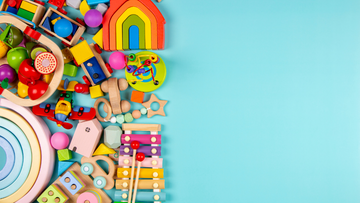Building Strong Fine Motor Skills: A Guide for Parents
Fine motor skills involve the use of small muscles in the hands, fingers, and wrists to perform precise movements and tasks. They are essential for children's overall development and play a crucial role in their ability to interact with the world around them. In this section, we will explore the importance of developing fine motor skills and the various stages of fine motor skill development in early childhood.
The Importance of Developing Fine Motor Skills
Developing strong fine motor skills is vital for children as they navigate their daily lives and engage in cognitive activities.
Enhancing Daily Life Functions
Fine motor skills are essential for a range of everyday tasks, such as buttoning clothes, using utensils, tying shoelaces, and writing. By developing these skills, children gain independence and confidence in their abilities to perform daily life functions.
Supporting Cognitive Development
Fine motor skills also play a critical role in supporting cognitive development. They help children explore and manipulate their environment, enabling them to learn and understand new concepts. Activities that involve fine motor skills, such as drawing or assembling puzzles, can also improve focus, attention, and problem-solving abilities.
Stages of Fine Motor Skill Development
Fine motor skills develop gradually as children grow and gain more control over their small muscles. The development of these skills typically follows a predictable sequence of milestones.
Infant Milestones
During infancy, babies begin to develop their fine motor skills by grasping objects, transferring items between hands, and reaching for toys. Key milestones in this stage include:
- Reflexive grasping (birth to 3 months): Newborns instinctively grasp objects placed in their hands.
- Voluntary grasping (3 to 6 months): Babies start to reach for and grasp objects intentionally.
- Raking grasp (6 to 9 months): Infants use their fingers to rake small items toward themselves.
- Pincer grasp (9 to 12 months): Babies develop the ability to pick up small objects using their thumb and index finger.
Toddler and Preschooler Milestones
As children enter the toddler and preschool years, their fine motor skills become more refined and complex. Key milestones in this stage include:
- Stacking and nesting (12 to 24 months): Toddlers begin to stack blocks, nest cups, and manipulate shape sorters.
- Scribbling (18 to 36 months): Children start to make marks on paper using crayons or markers, initially with random scribbles and later with more controlled movements.
- Scissor skills (3 to 4 years): Preschoolers learn to use scissors safely and develop the ability to cut along straight and curved lines.
- Writing (4 to 5 years): Children begin to form letters and write their names, as well as draw simple shapes and figures.
Encouraging Fine Motor Skills Through Play
Play is a vital component of a child's development, and it offers numerous opportunities for children to practice and improve their fine motor skills. By engaging in various types of play activities and creating an enriching play environment, parents can effectively support their child's fine motor development.
Types of Play Activities that Boost Fine Motor Skills
There are several types of play activities that can help children build their fine motor skills, including manipulative and creative play.
Manipulative Play
Manipulative play involves the use of hands and fingers to move, adjust, or change objects. This type of play encourages children to develop fine motor skills like grasping, pinching, and hand-eye coordination. Examples of manipulative play activities include:
- Assembling puzzles
- Stacking blocks or nesting cups
- Threading beads onto strings
- Playing with playdough or clay
Creative Play
Creative play encourages children to express themselves and explore new ideas through artistic mediums. Engaging in creative play can also help develop fine motor skills by requiring precise hand movements and control. Examples of creative play activities that promote fine motor development include:
- Drawing or coloring with crayons, markers, or paint
- Cutting and gluing to create collages or craft projects
- Playing with sensory materials such as sand, water, or rice
Creating an Enriching Play Environment
To support your child's fine motor development, it's essential to create a play environment that encourages exploration and offers age-appropriate toys and activities.
Offering Age-Appropriate Toys and Activities

Choose toys and activities that match your child's developmental stage and encourage the use of fine motor skills. Some examples of age-appropriate toys for fine motor development include:
- Rattles and textured toys for infants
- Shape sorters and stacking toys for toddlers
- Wooden puzzle Montessori toys for preschoolers
Encouraging Independent Exploration
Allow your child the freedom to explore and engage with their environment independently. This encourages them to practice and refine their fine motor skills at their own pace. Provide a safe and stimulating space filled with a variety of toys and materials that promote fine motor development, and give your child ample time for unstructured play.
By incorporating these strategies into your child's playtime, you can effectively encourage the development of strong fine motor skills, setting the foundation for future growth and success.
Wooden Puzzle Montessori Toys: A Tool for Fine Motor Development

Wooden puzzle Montessori toys are an excellent tool for promoting fine motor development in young children. These thoughtfully designed and engaging toys offer numerous benefits for building fine motor skills, such as grasping, hand-eye coordination, and problem-solving abilities.
Key Features of Wooden Puzzle Montessori Toys
Wooden puzzle Montessori toys have several unique features that make them an excellent choice for supporting your child's fine motor development.
Thoughtful Design and Craftsmanship
These toys are designed with children's developmental needs in mind, often featuring smooth edges, durable materials, and varying levels of difficulty to accommodate different stages of development. The craftsmanship of wooden puzzle Montessori toys ensures that they can withstand frequent use and provide a safe and enjoyable play experience for your child.
Educational and Engaging
Wooden puzzle Montessori toys are not only fun to play with but also educational. They introduce children to new concepts such as shapes, colors, and patterns, while also encouraging critical thinking and problem-solving skills. By engaging children in a captivating and meaningful way, these toys promote sustained focus and attention, which are essential for fine motor skill development.
How Wooden Puzzle Montessori Toys Support Fine Motor Skill Development

Wooden puzzle Montessori toys provide various opportunities for children to practice and refine their fine motor skills during play.
Grasping and Pinching
Many wooden puzzle Montessori toys require children to grasp and pinch pieces to remove or place them correctly. This helps develop crucial fine motor skills like the pincer grasp, which is essential for performing everyday tasks like holding a pencil or picking up small objects.
Hand-Eye Coordination
Playing with wooden puzzle Montessori toys often involves matching pieces to their corresponding spaces, which requires children to use hand-eye coordination. This skill is vital for activities such as writing, buttoning clothes, and using utensils.
Problem Solving and Spatial Awareness
Wooden puzzle Montessori toys challenge children to think critically and develop spatial awareness by figuring out how pieces fit together. As children manipulate puzzle pieces and experiment with different configurations, they strengthen their fine motor skills and enhance their cognitive abilities.
Conclusion
Incorporating Wooden puzzle Montessori toys into your child's playtime can significantly enhance their fine motor skill development. These toys offer a fun and engaging way for children to practice and refine essential fine motor skills while also fostering cognitive growth.




